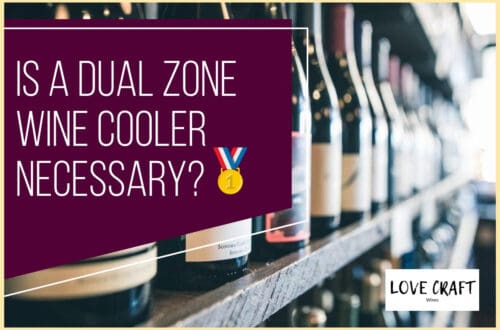You’ve probably heard the general rule of thumb that you should provide one bottle of wine per person at an event.
While this may seem like a good starting point, it’s important to consider the specific details of your event to determine how much wine you should actually provide for 100 guests.
After all, you don’t want to run out of wine too early or end up with a surplus that goes to waste.
So, how much wine should you provide for 100 guests at your event?
In this article, we’ll dive into the factors that can impact your wine selection and quantity.
From the length of your event to your guests’ preferences, there are several key things to keep in mind when planning for the perfect amount of wine.
By understanding these details, you can ensure that your guests have a memorable experience without breaking the bank.
Table of Contents
Understanding the General Rule of Thumb
You’ll love learning the general rule of thumb for determining the amount of vino needed for 100 people at your next gathering.
Calculating servings is a great way to start. Typically, one standard bottle of wine contains 750 ml or 25 ounces, which is roughly five servings. Therefore, a four-hour event with 100 guests would require approximately 25 bottles or 125 servings of wine.
Estimating consumption is also essential in determining the amount of wine to provide for your guests. The general rule of thumb is to assume that each guest will consume two glasses of wine during the first hour of the event and one glass per hour for the remainder of the gathering.
Based on this estimate, you would need to provide at least 300 glasses of wine or 50 bottles for a four-hour event with 100 guests. However, you may need to adjust this amount based on the preferences and drinking habits of your attendees.
Considering the Length of the Event
The length of your event will greatly impact the amount of alcohol consumed, as studies show that guests tend to drink more per hour when events are longer. This means that if you’re hosting a longer event, such as a wedding reception or a corporate dinner, you’ll need to factor in the extra time when calculating how much wine to provide for your guests.
Additionally, you’ll need to decide whether to offer an open bar or limited drink options, as this will also affect the amount of wine that will be consumed. Calculating wine consumption based on time is a simple process that can help you determine how much wine to provide for your guests.
As a general rule of thumb, guests will consume one drink per hour, so for a four-hour event with 100 guests, you’ll need to provide at least 400 drinks. If you’re offering wine as the primary drink option, then you’ll need to factor in the fact that guests tend to consume more wine per hour than other drinks.
On average, guests will consume 5-6 ounces of wine per hour, so for a four-hour event with 100 guests, you’ll need to provide at least 1,200 ounces of wine.
Selecting the Right Type of Wine
When you’re deciding which type of wine to choose, imagine the flavors and aromas that will perfectly complement the food and create an unforgettable experience for your taste buds. Consider the food pairings and serving temperature as well.
For example, if you’re serving seafood, a crisp white wine like Sauvignon Blanc or Pinot Grigio would be a great option. If you’re serving red meat, a bold red wine like Cabernet Sauvignon or Merlot would be a better fit. It’s important to choose wines that will enhance the flavors of the food and not overpower them.
The serving temperature of the wine is also important to consider. White wines should be served chilled, while red wines should be served at room temperature. If you’re serving both red and white wines, make sure to have separate coolers for each type to ensure they’re served at the appropriate temperature.
Remember, the right type of wine can make a huge impression on your guests, so take the time to choose wisely and create an unforgettable dining experience. Now, let’s talk about how to cater to your guests’ preferences.
Catering to Your Guests’ Preferences
If you want to knock the socks off of your guests at your next shindig, it’s important to go the extra mile to make sure everyone’s taste buds are satisfied by customizing options and offering alternatives.
While selecting the right type of wine is important, it’s equally crucial to cater to your guests’ preferences. Not everyone likes the same type of wine, so it’s important to offer a variety of options to choose from. Consider offering both red and white wines, as well as a few different varietals within each category. You may also want to consider offering a non-alcoholic option for those who don’t drink.
To ensure that everyone’s taste buds are satisfied, consider customizing options based on your guests’ preferences. Find out if anyone has any food allergies or dietary restrictions, and offer alternatives accordingly. For example, if you have guests who can’t have gluten, consider offering a gluten-free wine. You may also want to offer wines from different regions, as some guests may prefer a California Cabernet over a French Bordeaux.
By catering to your guests’ preferences, you can create a memorable event that everyone will enjoy. When it comes to providing wine for 100 guests, catering to your guests’ preferences can seem like a daunting task. However, there are ways to stay within your budget while still offering a variety of options.
Tips for Staying Within Your Budget
It’s possible to offer a variety of wine options for your 100 guests without exceeding your budget. Buying in bulk and negotiating prices with your local wine supplier can help you save some cash. You can also opt for less expensive varietals from different regions. For example, instead of serving expensive Bordeaux wines, you can offer affordable Chilean or Argentinian wines.
Here are some tips for staying within your budget while still offering a diverse wine selection:
-
Buy wine in bulk: Many wine suppliers offer discounts when you buy in bulk. This is a great way to save money on your wine purchase and still offer a variety of options to your guests.
-
Negotiate prices: Don’t be afraid to negotiate prices with your wine supplier. They may be willing to offer you a better deal if you are buying a large quantity of wine.
-
Alternative beverage options: You don’t have to stick to wine only. Offering alternative beverage options such as beer, cocktails, or non-alcoholic drinks can help you save money on wine while still providing your guests with a refreshing beverage.
By following these tips, you can offer a diverse selection of wine and alternative beverage options for your guests without going over budget. Remember to plan ahead and shop around for the best deals to ensure a successful event.
Frequently Asked Questions
How do I calculate the amount of wine needed if I am also serving other types of alcohol?
To ensure your guests have a memorable experience, it’s important to calculate the perfect amount of wine needed for your event.
Start by determining your wine to guest ratio, which is typically one bottle of wine per two guests. However, this can vary depending on the preferences of your guests.
Conduct an alcohol preference survey to determine which types of alcohol your guests prefer and adjust your wine ratio accordingly.
Keep in mind that for a four-hour event, guests typically consume one drink per hour.
By taking these factors into consideration, you can confidently provide the right amount of wine for your guests to enjoy.
Is it necessary to provide non-alcoholic beverage options for guests who do not drink?
If you want to be a considerate host, it’s important to offer wine alternatives and non-alcoholic beverage options for guests who don’t drink.
While some may assume that everyone enjoys a glass of wine or a cocktail, it’s important to remember that not everyone has the same preferences.
Offering a variety of drink options will ensure that all guests feel included and comfortable at your event.
Wine alternatives can include sparkling juices or non-alcoholic beer, while non-alcoholic beverage options can be anything from soda and water to creative mocktails.
By accommodating different preferences, you’ll create a welcoming and enjoyable atmosphere for all your guests.
Can I provide a variety of wine options or should I stick to one type of wine?
When it comes to providing wine for your guests, wine pairing should be a top priority. Offering a variety of wine options can enhance the dining experience and impress your guests.
However, cost comparison should also be considered. If you’re on a tight budget, offering one type of wine can be a more practical choice. Keep in mind that the quality of the wine matters more than the quantity.
A knowledgeable wine supplier can help you choose the best options for your budget and event.
How do I ensure that the wine I provide is of good quality but also fits within my budget?
When it comes to wine selection for an event, it can be difficult to balance quality with budget constraints. To ensure you get the most bang for your buck, consider researching affordable but highly rated wines from reputable sources.
You may also want to consider purchasing in bulk or negotiating with vendors for discounts. Additionally, don’t be afraid to ask for recommendations from wine professionals or even conduct a tasting beforehand to ensure that the wine you select is not only budget-friendly but also appeals to a wide range of tastes.
Ultimately, with careful planning and consideration, you can provide guests with a delicious and satisfying wine selection without breaking the bank.
What is the proper way to store and serve wine at an event?
To properly store and serve wine at your event, it’s important to consider the temperature at which the wine is served. Red wines should be served at a temperature between 60 and 68 degrees Fahrenheit, while white wines should be served between 49 and 55 degrees Fahrenheit.
To achieve the desired temperature, it’s best to store red wines at room temperature and chill white wines in the refrigerator. Decanting is another important technique in wine service, which involves pouring the wine from the bottle into a decanter to remove any sediment and allow the wine to breathe.
This can enhance the flavor and aroma of the wine, making it more enjoyable for your guests. By paying attention to the temperature and decanting techniques, you can ensure that the wine at your event is served in the best possible way.
Conclusion
So now that you’ve learned about the general rule of thumb, the length of the event, the right type of wine, and catering to your guests’ preferences, you’re ready to put it all together and start planning your wine selection for your upcoming event.
Remember to stay within your budget, and don’t be afraid to ask for help or advice from a professional sommelier or wine merchant if you need it.
Ultimately, the amount of wine you provide for 100 guests at your event will depend on several factors, but by following these guidelines and taking the time to plan carefully, you can ensure that your guests will be satisfied and that your event will be a success.
So go ahead and raise a glass to your newfound knowledge, and enjoy a great evening with your friends and loved ones!





